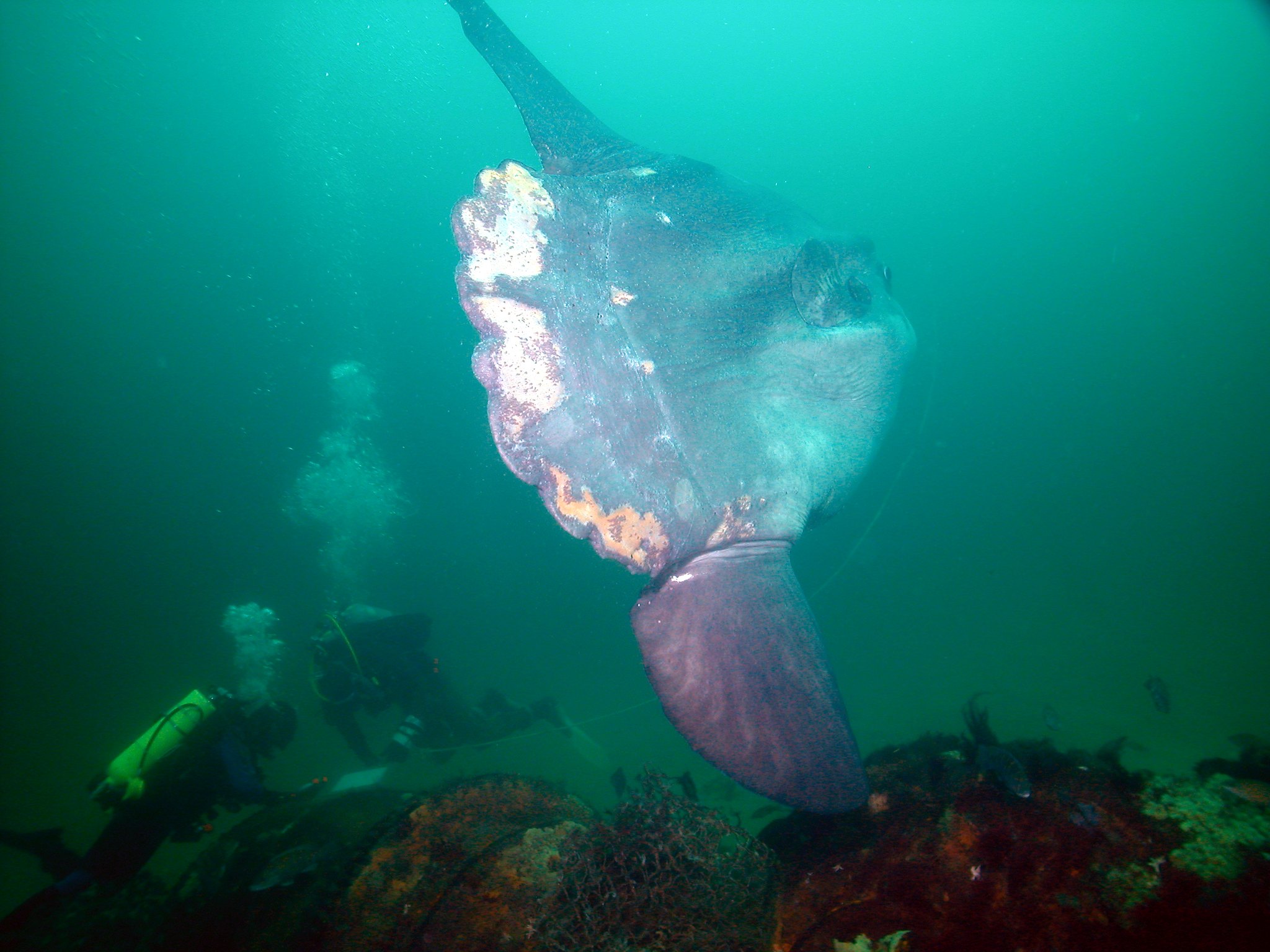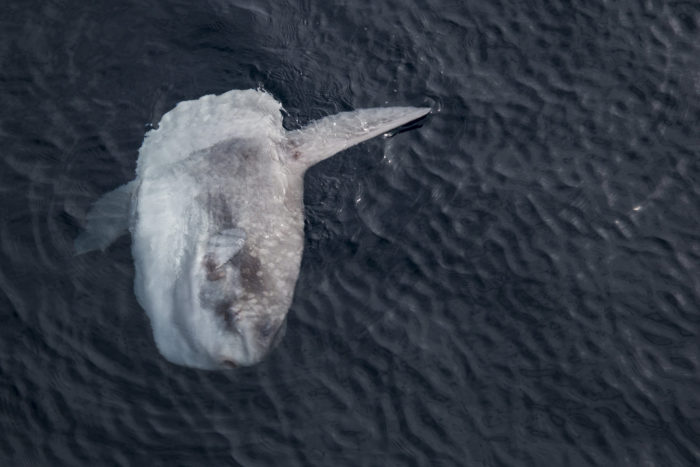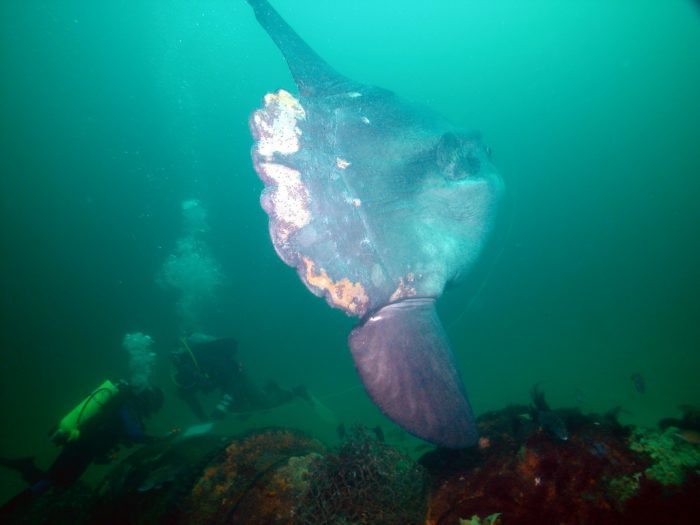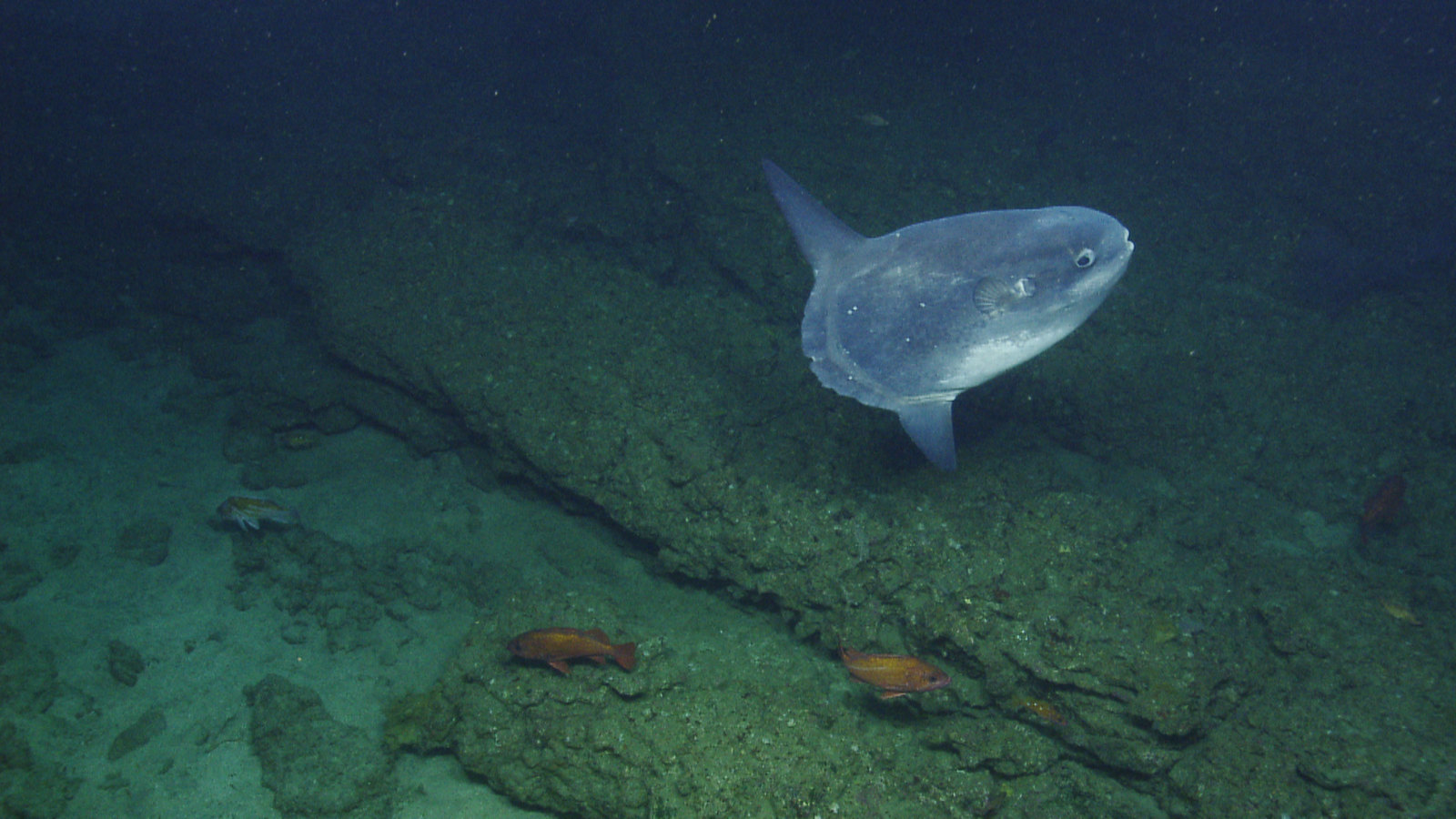
Creature Feature: Ocean Sunfish (Mola mola)

Photo credit: Maps for Good/NOAA/PointBlue/ACCESS
This week’s creature feature might resemble a floating blob, but it is in fact the largest bony fish in the sea. Say hello to the Mola mola or more commonly known as the ocean sunfish! These odd creatures get their name from their habit of laying their bodies on the surface of the water to warm themselves by the sun.
Appearance
Mola mola have tall, thin bodies and are born with a tail but it never fully grows and instead folds into a stubby rudder as the fish matures. These gentle giants reach up to 14 feet high, 10 feet wide and weigh close to 5,000 pounds! Their skin is thick and leathery, patterned with variations of gray and white and overlaid with an iridescent sheen. When these creatures feel under attack, they can change their skin color from light to dark in order to camouflage in the surrounding deep blue waters. Mola mola are curious creatures and will often approach divers. Many times these creatures are mistaken for sharks when their dorsal fins emerge above the water.
Habitat
Mola mola are found in all tropical and temperate ocean waters, including many National Marine Sanctuaries like Olympic Coast, Cordell Bank and Stellwagen Bank. Although they are seen basking on the ocean surface, mola spend considerable time submerged in deeper waters up to 500 meters. Scientists suspect they do this to absorb warmth from the sun before retreating back into the cooler ocean depths.

Photo credit: Matthew Lawrence/NOAA
Diet & Life History
Mola mola are foraging predators. They comb through the floating surface weeds as well as scavenge the ocean floor in deeper waters for different critters. Their diet consists of fish, algae and crustaceans. As molas mature, their diets shift to include jellyfish.
While there is limited knowledge on the reproductive methods, mola are known to reproduce through broadcast spawning. Females release their eggs into the water simultaneously as males release their sperm near the released eggs. A female releases as many as 300 million eggs in one spawning session. The lifespan in the wild is unknown though in captivity individuals have survived over eight years.
Molas’ large size makes it difficult for predators to attack them, though medium-sized individuals are sometimes targeted by sea lions, killer whales, and large sharks. In order to penetrate their tough skin, sea lions will rip off their fins and slam the dismembered bodies against the surface.
Threats and Conservation
The mola population is considered vulnerable by the IUCN. As with many other ocean dwellers, big threats to this species include marine debris and fishing activity. Plastic bags are especially detrimental to the fact they resemble floating jellyfish and are consumed. In addition, this species is captured in high numbers as bycatch, the unintentional capture of non-target creatures by fisherman.
More research on and knowledge of these creatures is needed in order to create conservation action plans. The best way to protect and conserve these creatures is to continue research and monitoring their ecology, population trends, distribution and threats.

Photo credit: OET/NOAA
